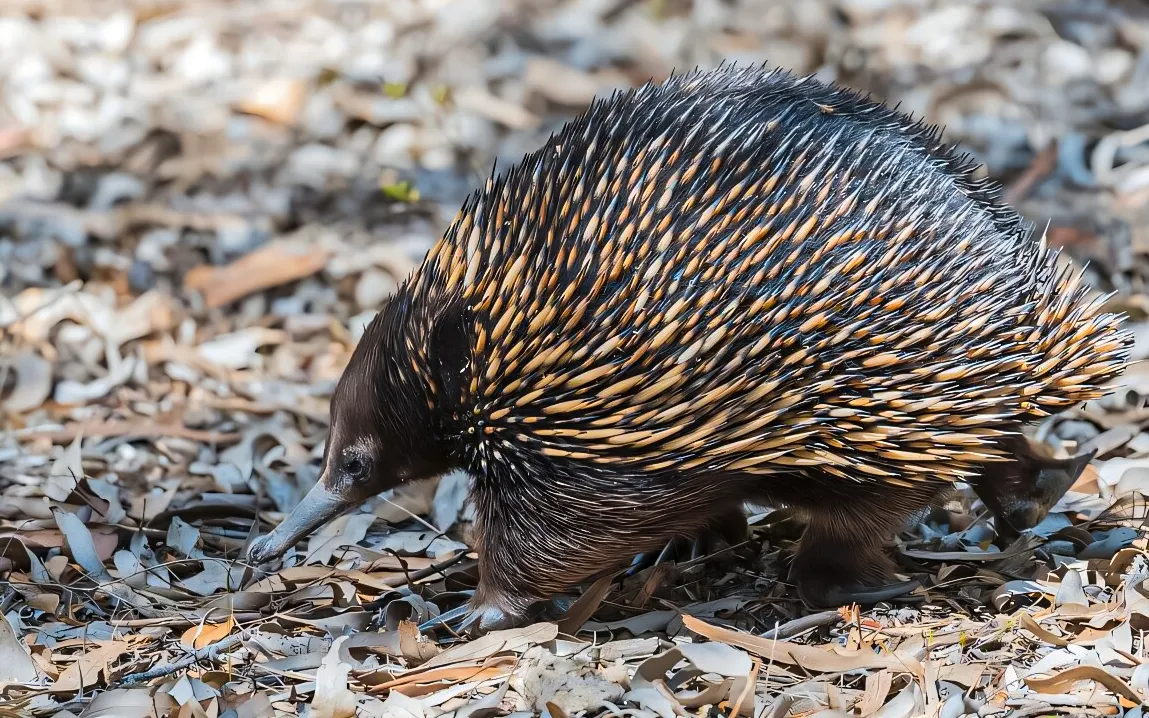A fossilized humerus bone discovered three decades ago in southeastern Australia is rewriting scientists’ knowledge on how the world’s most bizarre mammals, echidnas and platypuses, developed. Echidnas were long regarded as land-dwellers only, but they could have inherited a semi-aquatic ancestor from the platypus, suggests new research coordinated by the University of New South Wales (UNSW).
The research, in Proceedings of the National Academy of Sciences (PNAS), indicates the extinct mammal species Kryoryctes cadburyi, which is known only from this isolated limb bone, could fill the gap between dry-land echidnas and their aquatic relatives.
A lone fossil with big implications
It was discovered in Victoria at Dinosaur Cove during the early 1990s by a Museums Victoria excavation team and named Kryoryctes cadburyi in 2005. Its humerus externally looked like those of living echidnas, and it could be a close relative. But a new analysis of the bone’s internal structure has flipped that assumption on its head.
Using CT scans and other non-invasive imaging, researchers examined the microstructure of the bone to infer how the animal lived. While echidnas have lightweight bones suited for land, the fossil showed dense, thick-walled bone similar to that found in platypuses, an adaptation that helps aquatic mammals submerge and forage underwater.
“These heavy bones act like ballast,” said Prof. Hand. “You see this trait in animals like otters and beavers that live semiaquatic lifestyles. This fossil matches that pattern.”
Rewriting monotreme history
Both platypus and echidna are monotremes, a kind of egg-laying mammal, exclusive to Australia and New Guinea. They have long been thought to have shared a common land-based ancestor, and for the platypus, to have later adapted for living in part in water.
But the new research suggests the opposite: monotremes may have started in the water, with echidnas evolving later to survive on land. Co-author Professor Michael Archer of UNSW called the fossil “an exceptional opportunity to gain insights into how early Australian mammals lived.”
The theory is further supported by other biological quirks in echidnas that hint at aquatic ancestry. For example, their hind feet are turned backwards, a trait used for swimming in platypuses, but repurposed for digging in echidnas. Echidnas also have a diving reflex and an unusual form of the oxygen-storing protein myoglobin, common in diving animals.
Even their beaks may carry clues. While echidnas lack the advanced electroreceptors of a platypus bill, embryonic studies show remnants of a bill-like structure in development, suggesting a shared past.
The Mystery Continues
Researchers plan to continue studying the fossil using advanced scanning techniques such as synchrotron imaging, which allows microscopic analysis without damaging the rare specimen.
“We can’t cut it open, but we can still learn a lot,” said Prof. Hand. “Bone histology—how bones grow and adapt—can tell us much about how an animal lived and evolved.”
The team is also upping its work on discovering additional fossils at locations such as Lightning Ridge in New South Wales, hoping to unearth additional proof of the early monotremes.
With only so few fossils of Mesozoic mammals discovered in Australia aside from teeth and jaws, Kryoryctes is an isolated chunk of evolutionary history, one that could perhaps finally shed light on how some of the world’s most bizarre mammals came to occupy land, sea, and argument among scientists.



